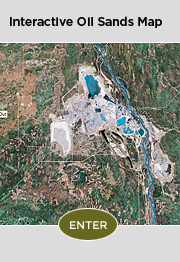Shifting Course. Reducing Risk.
Progress is often very rapid in the oil sands industry; so here at the Oil Sands Developers Group editorial board, we are taking stock of the significant progress driving the environmental evolution of the industry.
You may remember the recent changes required to oil sands tailings technology and management as a result of ERCB Directive 74. The Government of Alberta has recently followed up by revamping the oil sands mining reclamation and liability management programs.
The program changes reclamation reporting by boosting the number of milestones used to track reclamation and increasing the transparency of reporting reclamation progress. Beyond this, liability management was also increased by requiring an upfront payment when the risk of mine closure or abandonment is at a minimum (and its resource potential is at a maximum) followed by full financial security collected later in the mine’s life - but before assets are completely reduced. As has always been the case in Alberta, no matter if oil sands resources are developed using mining or in-situ (drillable) technologies, you simply cannot leave a mess behind … reclamation is, and always has been, a responsibility of the industry. In Alberta, reclamation is the law. One hundred per cent of the land developed by oil sands producers will, and must, be reclaimed.
Water monitoring in the oil sands region is another issue that has engendered recent criticism. The Government of Alberta has responded by appointing a panel to create a robust, credible and transparent environmental monitoring, evaluation and reporting system in the province, beginning with the oil sands region.
There has already been a lot of good data collected by the monitoring programs in the region; nevertheless, oil sands operators look forward to the enhanced monitoring program and are certain that it will provide added benefit by integrating monitoring across all media (i.e. air, land, water and biodiversity).
The Government of Alberta has also recently announced an extremely proactive and integrated cumulative effects management system. The Lower Athabasca Regional Plan (LARP) includes the setting aside of 17 per cent of northeast Alberta (an area larger than the combined total of Banff and Jasper National Parks), including the potential claw-back of some oil sands leases. This is over and above the 20 per cent of northeast Alberta that has already been set aside via Wood Buffalo National Park (which by itself is nine times larger than the total area of surface minable oil sands).
In the end, this plan could conserve more than two million hectares of habitat for native species and increase recreation and tourism opportunities. As well, the LARP puts strict, science-based environmental limits in place for the management of regional scale cumulative effects on air, land disturbance, water and biodiversity.
Does this mean that all of the issues with respect to this plan are resolved? Unfortunately, no. Oil sands developers look forward to working with government to define details of compensation for oil sands leases that may be cancelled, issues impacting investment certainty and the workings of the environmental management tools that have been introduced. We are confident that government and industry will be able to resolve these issues in a manner that is in the overall best interest of the people of Alberta.
Manufacturing – whether it is oil, clothing, agriculture or any other product that supports our way of life – has an impact on the environment. This is why it is so crucial to have a deep understanding of what is taking place, the impacts we are having and how we can further protect the environment. The oil sands industry fully understands that we must all work together to monitor as wholly as possible, deliver transparent results and meet the expectations of the public while continuing to provide a secure and reliable energy source and the economic benefits that have been described as a job creation engine for Canada.




















